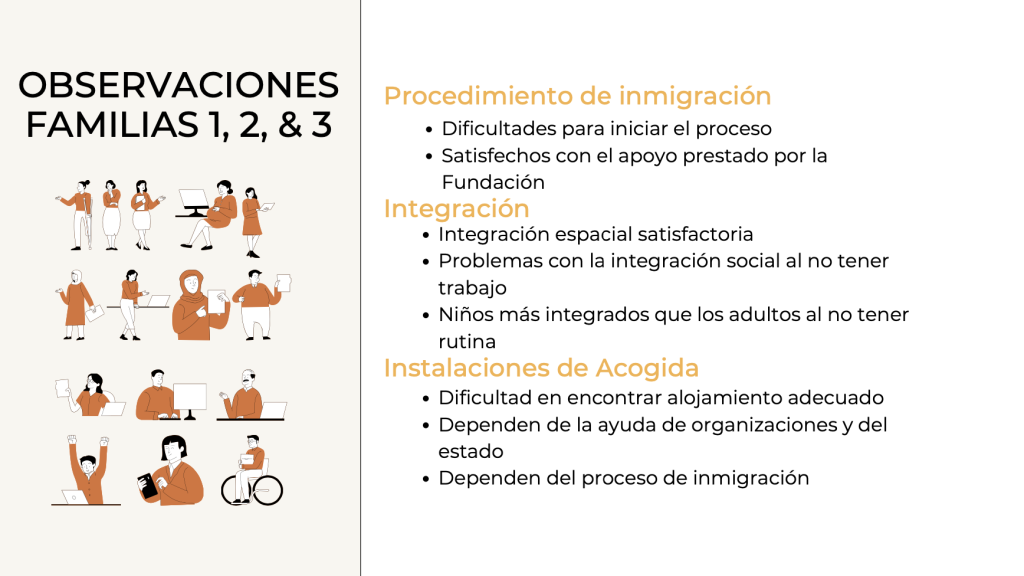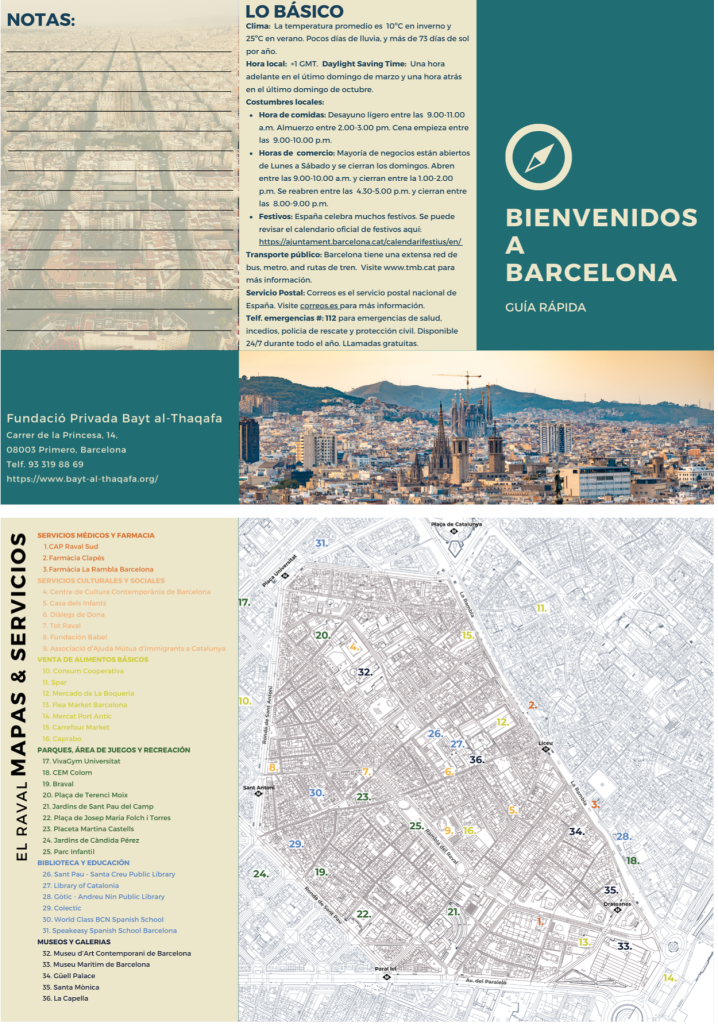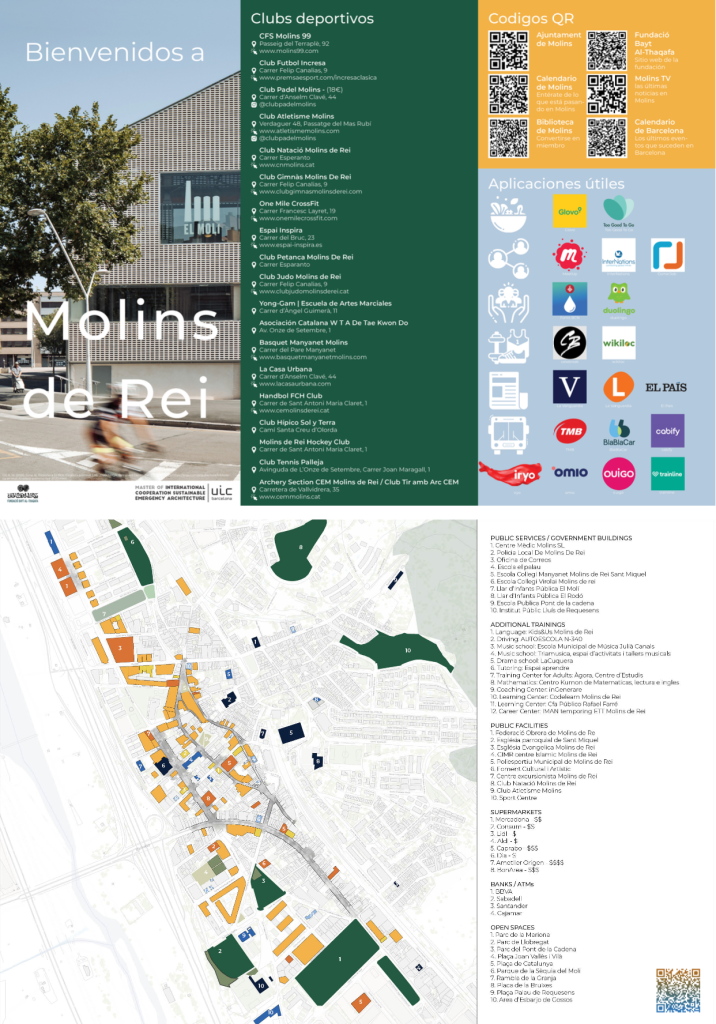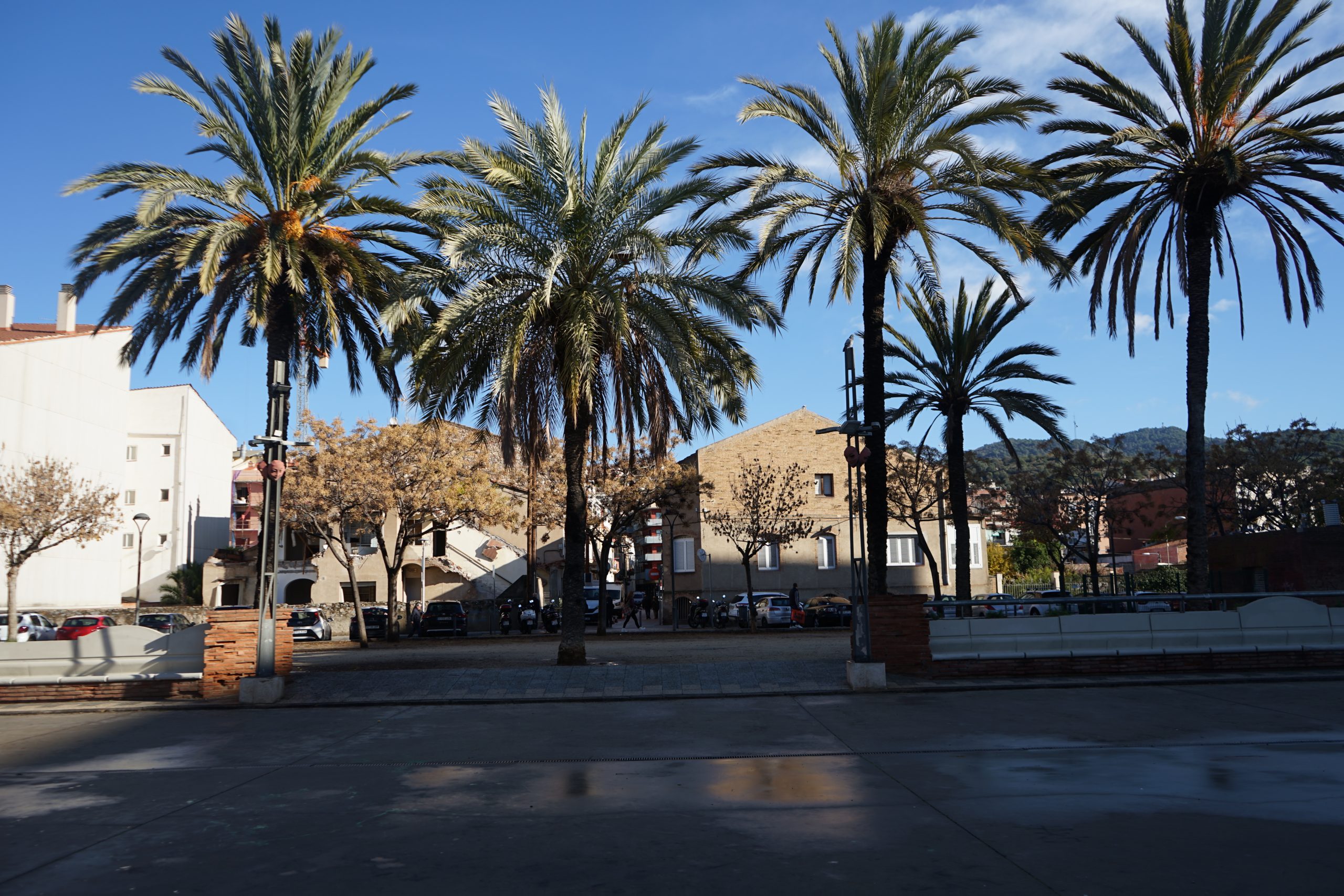Last December, Master of International Cooperation in Sustainable Emergency Architecture’s (MICSEA) students participated in a two-week Social Spatial Workshop in collaboration with the Fundació Bayt Al-Thaqafa. The Foundation guides and hosts asylum seekers from all nationalities to obtaining their refugee status and Spanish residence.
Fundació Bayt Al-Thaqafa (Home of Culture) was founded in 1974 and they now have two headquarters: one in Molins de Rei and another in Ciutat Vella in Barcelona in which they assist migrated people who are in the process of obtaining their Spanish residence. Asylum seekers are offered programs of orientation and advice in subjects that affect their lives and condition as foreigners. Newly arrived asylum-seekers in Barcelona have to face a long and uncertain process. Consequently, research has been done to enhance their situation. Regarding this, it has been proved that social networks of support and the design of their relation to the built environment improve the newcomer’s sense of belonging. This means that we need to work on the connection to the neighbourhood and on the creation of an identity with the new urban place.
Considering this, the workshop focused on developing socio-spatial maps which reflect the experience of different refugee women living in houses in Molins de Rei and hosted by the Foundation Bayt Al-ThaQafa. When conceiving shelters, designers usually think about the interior aspect where the urban scale and social integration in the urban-fabric is usually left behind. Lead by professors Carmen Mendoza Arroyo and Apen Ruiz with the collaboration of professor Marta Benages, students did an analysis through a feminist social-urban lens to focus on the aspects that are usually not prioritized.
Asylum seekers are people who have recently arrived to Spain and are waiting for the resolution of their permission to stay in the country. They need this resolution in order to be legally allowed to work or obtain employment. When students began this workshop they had two premises. On one hand, asylum seekers are in an emotionally vulnerable situation and sometimes have a lot of spare time. On the other hand, their day-to-day implies traveling often between Molins de Rei and Barcelona having been given very little information about any of both cities when they arrived to the Fundació.

On the field
Students spent the first days by listening to the asylum-seekers. There was a one day workshop with asylum-seeker families. Each group carried out several activities that involved: interviews, mapping their daily activities in their country of origin and in the present, as well as games with their children. Finally, students did ‘walkalongs’ with a few of these families, which consisted in accompanying them during their daily activities. This enabled them to know more about their social integration, the use and relationship with the city and what they were missing.
After having spoken with the asylum seekers, students moved on to the urban scale. They analysed the urban fabric of Molins de Rei and the neighbourhood of Ciutat Vella in Barcelona where some of the children still go to school. They drew a social cartography of both centres and carried out quick surveys with locals to evaluate their perception and knowledge of the Fundació as well as of the asylum-seekers. Unfortunately, the local awareness of their proximity to asylum-seekers turned out to be very low.
Through knowing what asylum-seekers used and were missing, students designed two interactive maps (one for each area) highlighting the main spots and what facilities they could use related to: leisure, facilities, comerce and mobility.

Key Findings
Below are some of the conclusions and considerations shared with the Fundació that could have a wider policy impact:
– Where possible, asylum-seekers should be asked which centre they prefer to be in. At present they are not asked, and are simply allocated to the centre where there is a free spot. Some may prefer a bigger city whereas others are comfortable in a smaller scale.
– More support should be given to asylum seekers with traumas they may have encountered before arriving to the shelter, taking into account that many of these traumas are gender-related. The Fundació offers the most basic needs and legal coverage, but some asylum-seekers have serious traumas that should also be cared for.
– Children’s care should be considered. Asylum-seekers that had come with their children asked for help when taking care of their kids to have time to work and be by themselves.
– Social integration for asylum seekers should be improved. Kids tend to integrate more easily since they go to school, meaning that they learn the language and have local friends faster, whereas adults struggle to integrate and can often feel isolated.

Continuity
One of the reasons MICSEA works with real partners on real projects is the chance to make a positive impact, sharing our analysis and findings of the workshops. This two-week collaboration is having and will continue to have its impact in the future. After the workshop, Fundació Bayt Al-Thaqafa has been using the pamphlets and the interactive website that students designed for them. Finally, MICSEA directors and Fundació Bayt Al-Thaqafa are joining discussions with the administration of Molins de Rei in order to improve the integration of asylum seekers.

